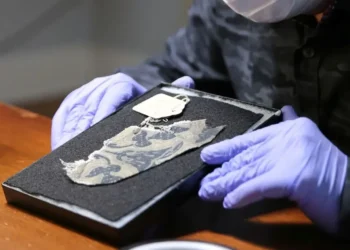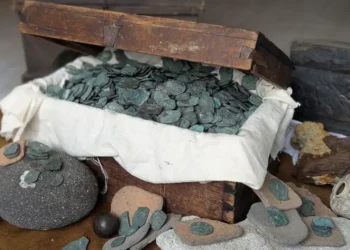NASA’s Curiosity Rover Finds Mysterious ‘Boxwork’ Patterns on Mars—And They Could Be Traces of Ancient Waterways
NASA’s Curiosity rover has stumbled upon something unexpected—and possibly game-changing—on Mars: mysterious “boxwork” patterns etched into the Martian surface, deep inside a region called Gale Crater. These strange geometric ridges may hold clues to how water once moved beneath the Red Planet’s surface—and why it eventually vanished.
And here’s the kicker: scientists have never seen anything quite like this on Mars before.
A Closer Look at the “Boxwork” Puzzle
The rover recently reached an area on Mount Sharp, a towering 3-mile-high peak Curiosity has been slowly climbing since 2014. There, it found crisscrossing ridges—some just a few inches tall—forming what geologists call boxwork patterns. These formations, carved into the Martian bedrock, are believed to have been created billions of years ago, when water still flowed beneath the planet’s surface.
Here’s how scientists think it happened:
- Groundwater slowly trickled through cracks in the rock.
- As the water moved, it left behind minerals, which filled the cracks and hardened.
- Over time, Martian wind eroded the softer surrounding rock, leaving behind a stubborn, fossil-like network of mineral ridges.
NASA says these hardened ridges have stood the test of time thanks to what it poetically calls “eons of sandblasting” from windstorms.
A Discovery Unlike Anything Else on Mount Sharp
Curiosity has seen many formations during its journey, but scientists say these particular patterns are unusual—not just for their appearance, but because they’ve only been found in this specific spot.
“A big mystery is why the ridges were hardened into these big patterns and why only here,” said Ashwin Vasavada, Curiosity’s project scientist at NASA’s Jet Propulsion Laboratory.
So far, no orbiting spacecraft and no previous rover stops have captured anything similar elsewhere on the mountain.
Time Travel Through Mars’ Climate History
What makes this discovery even more intriguing is where the rover is currently exploring—a layer of rock rich in magnesium sulfates, a salty mineral that typically forms as water evaporates.
This region represents a transitional period in Mars’ ancient climate, when the planet was slowly drying out. Yet, the boxwork ridges suggest that even during this drying phase, underground water was still present—and reshaping the landscape.
NASA notes that these layered rocks essentially serve as a Martian timeline, allowing scientists to “travel through time” as the rover ascends from older to younger rock formations.
A Surprising Comeback of Salty Veins
Another clue is giving scientists reason to pause: veins of calcium sulfate, a salt left behind by groundwater, are making a return in the bedrock.
“These calcium sulfate veins used to be everywhere, but they more or less disappeared as we climbed higher up Mount Sharp,” said Abigail Fraeman, Curiosity’s deputy project scientist. “The team is excited to figure out why they’ve returned now.”
Until now, these mineral veins hadn’t been seen in sulfate-rich layers—making their reappearance a tantalizing mystery.
A Mission That Keeps Delivering
Launched in 2011 and landing on Mars in 2012, Curiosity’s mission has been nothing short of historic. From the very beginning, its goal has been to find out whether Mars ever had the right conditions to support life.
And early on, it did just that—uncovering chemical and mineral evidence of ancient, potentially habitable environments. Now, over a decade later, the rover is still unearthing new surprises, raising fresh questions, and giving us a better picture of what Mars may have once looked like: a planet shaped by rivers, lakes, and maybe even oceans.
As Curiosity continues its slow climb up Mount Sharp, one thing is certain: Mars isn’t done telling its story.
This article was rewritten by JournosNews.com based on verified reporting from trusted sources. The content has been independently reviewed, fact-checked, and edited for accuracy, neutrality, tone, and global readability in accordance with Google News and AdSense standards.
All opinions, quotes, or statements from contributors, experts, or sourced organizations do not necessarily reflect the views of JournosNews.com. JournosNews.com maintains full editorial independence from any external funders, sponsors, or organizations.
Stay informed with JournosNews.com — your trusted source for verified global reporting and in-depth analysis. Follow us on Google News, BlueSky, and X for real-time updates.













